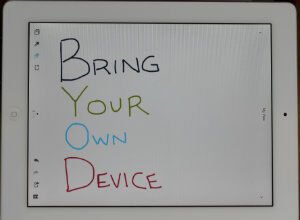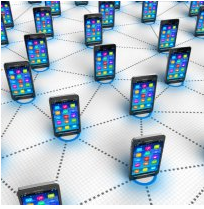 It’s amazing how popular tablets have become over the past few years. Originally many questioned their use, calling them simply an oversized smartphone with little individuality.
It’s amazing how popular tablets have become over the past few years. Originally many questioned their use, calling them simply an oversized smartphone with little individuality.
 It’s amazing how popular tablets have become over the past few years. Originally many questioned their use, calling them simply an oversized smartphone with little individuality. Naysayers are now eating their words. Today’s tablets are becoming faster, clearer and more functional than ever before, threatening laptops as the better option for on-the-go computing.
It’s amazing how popular tablets have become over the past few years. Originally many questioned their use, calling them simply an oversized smartphone with little individuality. Naysayers are now eating their words. Today’s tablets are becoming faster, clearer and more functional than ever before, threatening laptops as the better option for on-the-go computing.
Tablets have actually been around for a while, but it wasn’t until the modern tablet craze, arguably started by Apple, that the trend really took off. Now, devices like Microsoft’s Surface, can handle the majority of everyday work normally done on PCs, like word processing, video editing and creative design. Tablets also come standard with additional features, like touch screen, always-on data connectivity, and take advantage of touch input, motion sensors, GPS, and built-in cameras. Also, while traditional computers usually rely on expensive software, tablets rely on apps, which are generally far less expensive.
The rise in tablet popularity stems largely from their portability and mobile functions. Just as laptops provided freedom from the desk, tablets take us even further, allowing us to work from almost anywhere. Improvements in wireless networks and cellular services mean we can remain connected and share information almost instantly. In addition, the technology in tablet computers rivals most average laptops, and has more than enough power to cover our basic day-to-day needs.
Not surprisingly, these functional and mobile features appeal to the workforce just as much as the average user. The office of today has expanded outside buildings, and the 9 to 5, Monday to Friday work schedule has lengthened to a point where we feel a need to be connected 24/7/365. Mobile devices solve these issues, allowing constant connectivity and collaboration. Think about it, it’s much easier to make changes to a presentation on the way to a meeting with a tablet, than balancing a laptop on your knees while in the back of a cab. Employees recognise the advantages and understand how tablets allow them to be more effective and productive at their jobs.
For a long time, employers fought against allowing outside, personal devices into the workplace. This often forced employees to use outdated machines, instead of the better technology they had sitting on their desks at home. Fortunately, pressure from the workforce sparked the popular BYOD trend. Employers began realising the benefits as well and wanted to implement these new devices into their IT toolkits. While there were always concerns surrounding the security of employee-owned devices, many companies were still eager to capitalise on the promised benefits.
While portability and ease-of-use are some of the major advantages associated with employee-owned tablet computers, there are also cost savings associated with BYOD. Some IT departments spend millions of dollars to buy and support enterprise-owned tablets. They could significantly decrease that spending and support far more employee-owned devices by not having to purchase corporate equivalents.
Still, it won’t be all smooth sailing, and there’ll be a significant number of hurdles to overcome. As mentioned earlier, security issues always play a role when dealing with employee-owned devices. Companies looking to go the road of BYOD will need to incur upfront costs in order to improve security measures. This may include offering security software for employee devices, or trainings on how to protect company data stored on personal devices.
Another issue that may affect BYOD implementation for some businesses is a recent California court ruling. The court stated that work calls made on personal devices must be covered by the employer. While the law is specific to California, don’t be surprised if other states or even countries use this as a precedent. In addition, this law opens up a Pandora’s box of other services that should be reimbursed, like data plans or app downloads.
The transition to BYOD won’t be easy, but it’s certainly a path employers should invest in. The benefits of allowing employees to use familiar devices, coupled with new tech improvements, will improve business operations and quality of work. Nowhere is this more apparent than tablet computing, which blends the functionality of laptops with the portability of smartphones. The longer companies put off dealing with BYOD, the further they’ll fall behind and the harder it’ll be to recover. The sooner they begin making changes, the better off they’ll be for future tech improvements.










